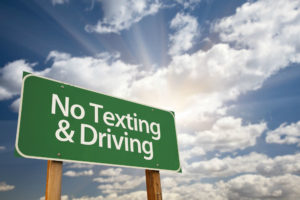Texting and driving simulators are being used in an educational campaign across the U.S. to raise awareness about the risks of distracted driving and to show teens how much of their focus is pulled from the road.
Distracted driving is an especially problematic risk for teens who are not yet comfortable with their skills on the road. Navigating through night driving, conversations with other passengers in the car, and working through difficult weather are just a few of the challenges teen drivers face. That’s why many studies illustrate that teen drivers are more likely to be involve in severe and fatal crashes.
Despite this knowledge, far too many teens still engage in distracted driving behavior. Many have a false sense of confidence about their ability to multi-task, and some teens only learn the devastating consequences of an accident after they’ve been in one.
Texting and Driving Simulators Mirror Real-Life Environments
Many of these texting and driving simulators function in a similar manner – they allow students to get behind the wheel of a driving machine that transmits text messages every 20 seconds. The students are then asked to reply to those messages while maintaining control of the vehicle.
 Many struggled to stay in their lane or maintain their speed. They virtually hit obstacles or ran over pedestrians to show how quickly a driver can lose control of the car.
Many struggled to stay in their lane or maintain their speed. They virtually hit obstacles or ran over pedestrians to show how quickly a driver can lose control of the car.
When many of the texting and driving simulator programs conclude, drivers make a pledge to avoid texting in the car.
Staff members often attending the presentation of the simulators try to give teens a taste of how easy it is to get involved in an accident and to point out that friends texting back and forth won’t be there to pay medical bills or help a teen recover from serious injuries.
AT&T’s “It Can Wait” simulator is currently traveling across the country to deliver the message of dangerous and distracted driving to as many schools as possible.
Research from the National Safety Council shows that, if effective, the texting and driving simulators could alter a very dangerous behavior.. According to their research, 1.4 million accidents each year are tied to drivers using a phone at the time of the crash.
At least 200,000 accidents are caused by texting and driving across the country. When looking at all the age groups of distracted drivers at the time of the crash, teens took the top spot. With the average teenager sending at least 3,000 text messages each month, it’s hard to curb the behavior when they get behind the wheel of car. However, knowing the dangers of this situation may help prevent deadly accidents or even deaths.
Teen driver accidents caused by distraction are on the rise, and it’s often the passengers or drivers of the other involved vehicle who suffer the most serious consequences..
If you or someone you know has been hurt in a vehicle accident, contact the dedicated attorneys at McDonald Worley today. The case evaluation is FREE!
